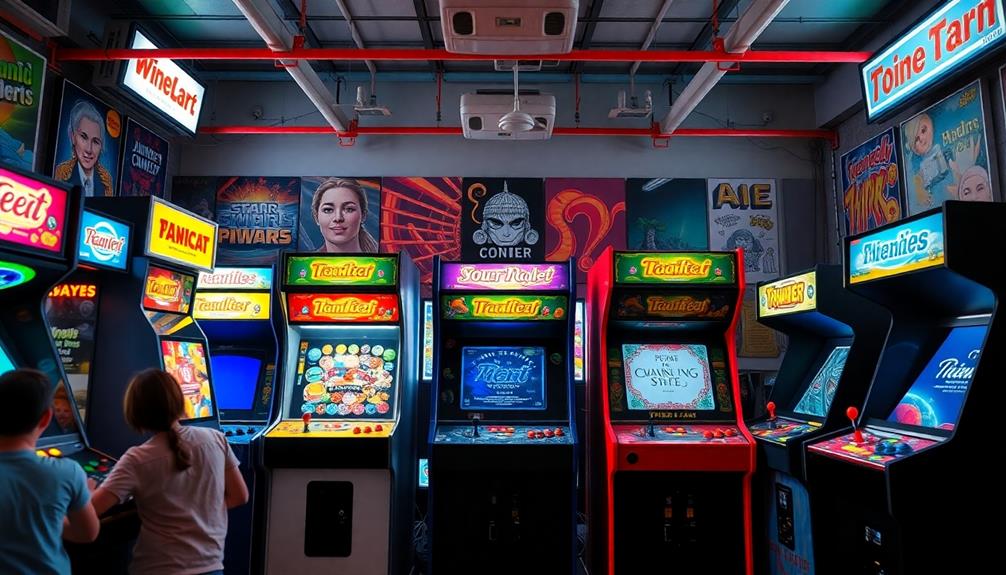Yes, Apple Arcade games require an internet connection for initial downloads and updates. Once the game is installed, many can be played offline, however, this varies depending on the specific title. For example, games like Adventure Quest provide unlimited offline play, whereas others like Puzzle Master can be played offline for only 30 days. Keep in mind that online features such as multiplayer modes and leaderboards usually need an internet connection. It is important to review the game specifications to determine what is feasible. If you are interested in learning more about the unique requirements of each game, there is a wealth of information available on this topic.
Key Takeaways
- Initial setup and downloads require an active internet connection for Apple Arcade games.
- Many games offer offline gameplay after the initial download, varying by title.
- Adventure Quest allows unlimited offline play, while others have time limits.
- Multiplayer features and updates generally require an internet connection.
- Game specifications provide details on connectivity needs and offline play conditions.
Initial Download Requirements
When you first download an Apple Arcade game, you'll need an active internet connection for the initial setup. This process guarantees that all necessary files and data are correctly downloaded from the App Store.
Once the initial download is complete, you'll typically be able to play many games offline, but it's important to check the specific game specifications before diving in. Each title may have different requirements, so you'll want to familiarize yourself with its connectivity needs. Additionally, it's wise to reflect on setting savings goals for any in-game purchases or subscriptions to enhance your experience.
Moreover, remember that an internet connection is vital for game updates and accessing new content added to the Apple Arcade library. Without a connection, you might miss out on significant patches or exciting new features.
The App Store provides detailed information about each game's offline capabilities, allowing you to make informed decisions before you hit that download button. If you're planning a trip or know you'll be without internet access, reviewing these specifics will help guarantee your gaming experience isn't interrupted.
Offline Gameplay Options

For gamers on the go, many Apple Arcade titles offer the flexibility of offline gameplay after the initial download. Once you've downloaded a game, you can dive right into the action without needing an internet connection. However, it's important to check the game details before you download, as the offline capabilities can vary by title.
Here's a quick overview of offline gameplay options:
| Game Title | Offline Play Duration |
|---|---|
| Adventure Quest | Unlimited |
| Puzzle Master | 30 Days |
| Racing Rivals | 14 Days |
| Strategy Legends | 7 Days |
| Action Heroes | 21 Days |
While many Apple Arcade games allow for extended offline gameplay, you'll need an internet connection for updates and the initial setup. So, before you hit the road, make sure you've got everything ready. With this flexibility, you can enjoy your favorite titles without worrying about finding Wi-Fi. Just download, check the game details, and enjoy uninterrupted gameplay anytime, anywhere! Furthermore, having internet connectivity for Apple Arcade games can also enhance your gaming experience by allowing you to connect with friends for multiplayer modes or access online leaderboards. This added feature provides an extra layer of entertainment and competition, making the games even more enjoyable. So, make sure to take advantage of the convenience and versatility that comes with an internet connection for Apple Arcade games. Lastly, having an internet connection for Apple Arcade games also opens up the possibility of receiving regular game updates and new content. This ensures that you’re always getting the latest features and improvements, keeping the gameplay fresh and exciting. Plus, with online connectivity, you can easily participate in exclusive events and challenges, adding another dimension to your gaming experience. Ultimately, the internet connection for Apple Arcade games offers a multitude of benefits that enrich and enhance your overall enjoyment of the games.
Game-Specific Connectivity Needs

Understanding the game-specific connectivity needs of Apple Arcade titles is vital for a seamless gaming experience. While many games allow for offline gameplay after your initial download, some features still demand an active Internet connection. To avoid surprises, check each game's specifications in the App Store before you download.
Additionally, fostering a creative mindset can enhance your overall gaming experience, allowing you to better appreciate the design and innovation behind each title, as highlighted in design thinking principles.
Certain titles may require online access for multiplayer modes, leaderboards, or to receive game updates. These requirements can differ based on the developer's choices, so make sure you're aware of what each game needs. The duration of offline gameplay can also vary by title, which means it's important to review individual game specifications to see how long you can play without connectivity.
When you're ready to jump into your favorite Apple Arcade games, confirm you have a stable Internet connection for those initial downloads and any necessary updates. This way, you'll enjoy uninterrupted gameplay later on.
Subscription Benefits and Limitations

Apple Arcade's subscription model offers a treasure trove of benefits, making it an attractive option for gamers. With this subscription service, you can download and play a diverse range of games without worrying about extra costs. Once downloaded, many titles allow for extensive offline play, meaning you can enjoy gaming even when you don't have an internet connection.
Moreover, just like how investing in a Gold IRA can provide stability in uncertain markets, Apple Arcade delivers a consistent gaming experience. However, it's essential to check each game's specifications, as some titles may require an initial internet connection for setup and updates.
While you can engage in many games offline, remember that an active internet connection is necessary for multiplayer features and to access new content. Game updates also require connectivity, which can impact your gaming experience if you're not online.
The duration and conditions of offline play can differ from one game to another, so always review the specific game descriptions in the App Store for clarity. Overall, Apple Arcade provides a flexible gaming experience, but understanding these benefits and limitations guarantees you get the most out of your subscription while maneuvering the online and offline gaming landscape.
Community Feedback and Support

Many gamers find community forums to be invaluable resources for sharing insights about the internet connectivity needs of various Apple Arcade titles. These platforms allow you to connect with other players, discussing which games require an active internet connection and which support offline play.
Your feedback is vital, as many users emphasize the need for clear communication from developers regarding connectivity requirements. As the demand for seamless gaming experiences increases, similar to how AI Ethicist Jobs are shaping tech, understanding these connectivity needs is essential for developers.
While some games do allow for offline play, many still require an initial internet connection for downloading and updates. This can be confusing, so community feedback often calls for streamlined troubleshooting guides that clarify these internet requirements.
By contributing your experiences, you help others enhance their gaming experience and navigate potential connectivity issues. Developers actively monitor this feedback, taking it into account when addressing concerns about connectivity hurdles.
They aim to improve the overall gaming experience by providing timely updates and clearer information. So, if you've faced any challenges, share your insights in the forums. Your input not only aids you but also helps countless others in the Apple Arcade community.
Frequently Asked Questions
Can I Play Apple Arcade Games Offline?
Yes, you can play many Apple Arcade games offline after downloading them. However, check each game's specifications for offline capabilities, as some may require an internet connection for certain features even after the initial setup.
Do Arcade Games Need Wifi?
Arcade games don't always need Wi-Fi. Once you've downloaded them, you can play offline. However, some features or updates require an Internet connection, so check specific game details to know what you'll need.
What Do You Need to Play Apple Arcade Games?
Imagine diving into a world of endless gaming. To play Apple Arcade games, you need an Apple device, a subscription, and a compatible OS. Download your favorites, and you're ready for fun anytime, anywhere!
How Do Apple Arcade Games Work?
Apple Arcade games offer a vast library you can download and play. You can switch between titles easily, enjoying ad-free experiences. Just remember to check each game's description for offline capabilities and features.
Conclusion
In the world of Apple Arcade, your gaming experience can be a double-edged sword. While some games require an internet connection like a lifeline, others let you plunge into adventures offline, freeing you from the digital tether. Ultimately, it's about choosing the right games that fit your journey. So, whether you're connected or unplugged, there's a treasure trove waiting for you, ready to whisk you away into a domain of endless possibilities.









